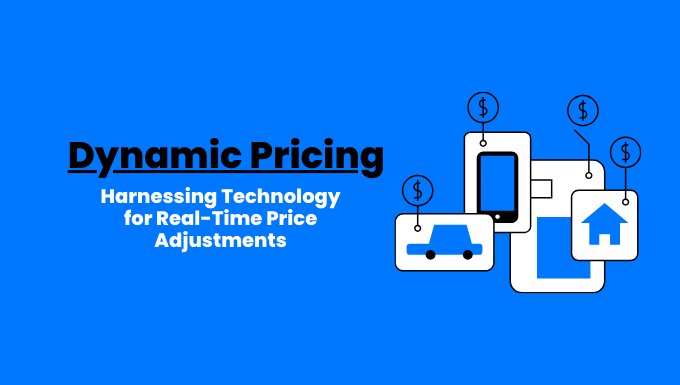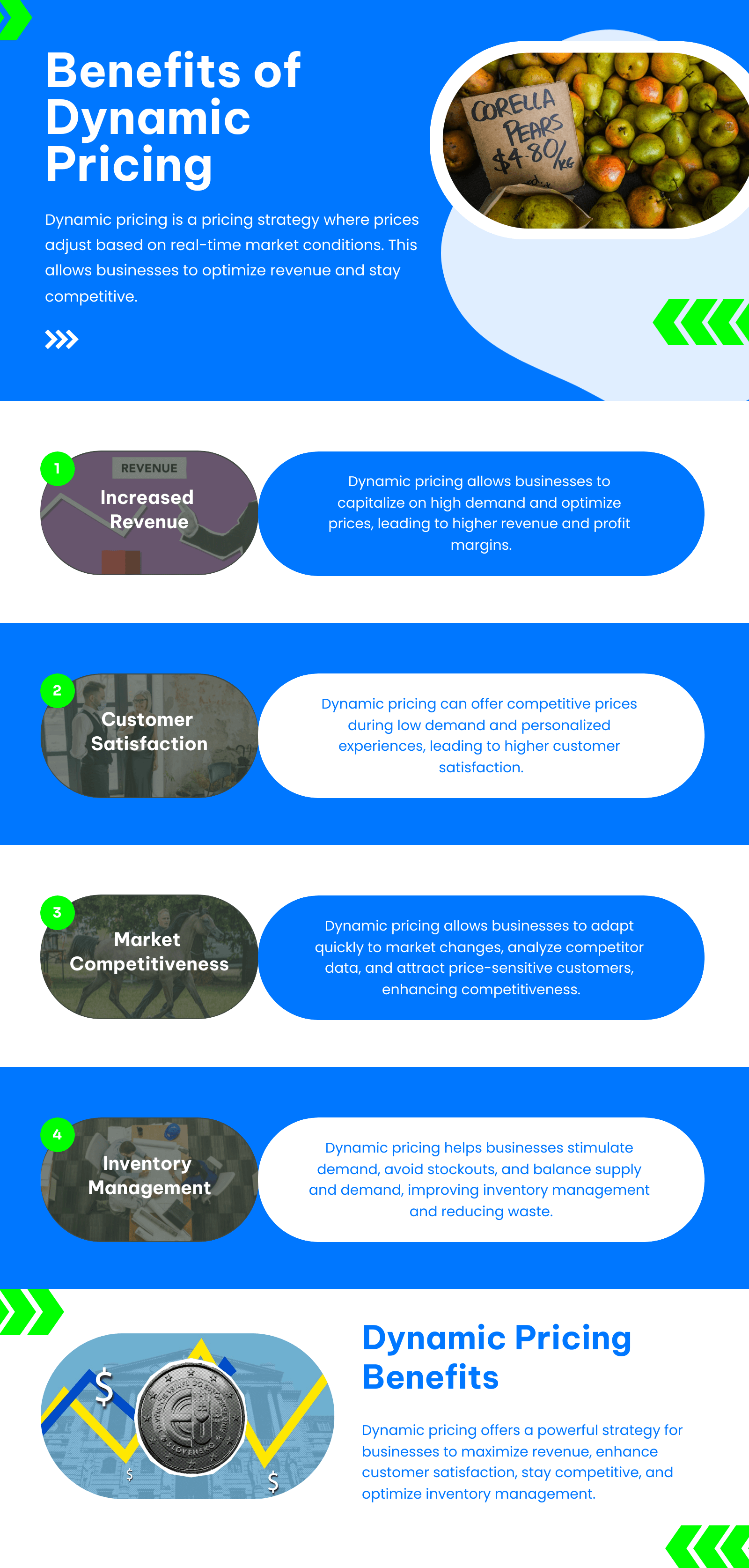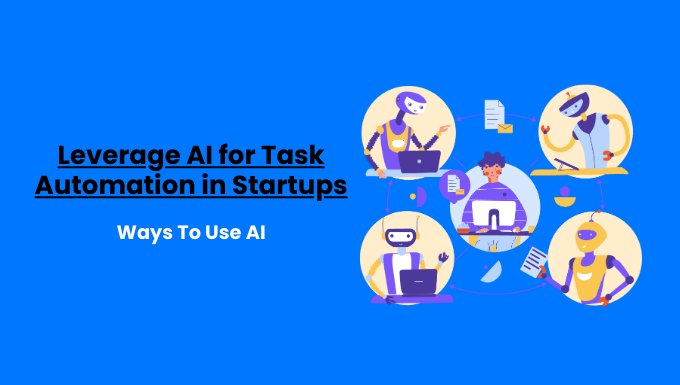Ever wonder how prices seem to change in the blink of an eye? That’s dynamic pricing at work!
This cutting-edge strategy uses real-time data analysis and automated pricing software to adjust prices instantly.
Imagine boosting your profits and staying ahead of competitors with technology-driven pricing decisions.
Discover how dynamic pricing can revolutionize your business strategy and maximize your revenue potential.
Key Takeaways:
- Dynamic pricing uses real-time data to adjust prices based on market demand and competition.
- Implementing dynamic pricing can increase revenue, improve inventory management, and enhance customer satisfaction.
- AI and machine learning play a crucial role in developing effective dynamic pricing strategies.
- Industries like e-commerce, airlines, and hospitality benefit greatly from dynamic pricing.
- To get started, assess your business needs, choose the right technology, and train your team.
Dynamic pricing, a type of pricing approach where prices are adjusted in real-time based on various factors such as market demand, competition, and external influences, is increasingly utilized by businesses.

Contents
ToggleThis pricing strategy involves several key elements:
- Real-Time Adjustments: Prices are not set in stone but change dynamically to reflect market conditions, a practice increasingly adopted by companies implementing dynamic pricing in electricity to adapt to fluctuating energy demands.
- Data-Driven Decisions: Dynamic pricing relies on data analytics, often powered by AI and machine learning, to make informed pricing adjustments.
- Various Models: This strategy encompasses different pricing models including time-based, segmented, peak, competitive, and value-based pricing.
Importance of Real-Time Pricing in Today’s Modern Business
In the fast-paced world of business, using real-time pricing offers numerous benefits that can give companies a competitive edge and boost revenue.
- Revenue Optimization: By adjusting prices in response to changes in demand, businesses can maximize their revenue potential.
- Competitive Edge: Dynamic pricing enables companies to stay agile and competitive by adapting prices to match market conditions.
- Enhanced Customer Segmentation: Tailoring prices to different customer segments can improve conversion rates and enhance customer satisfaction, proving that dynamic pricing stands as a useful tool for market segmentation.
- Inventory Management: Adjusting prices dynamically can help manage inventory levels by promoting sales of overstocked items, showing how dynamic pricing helps with effective stock control.
- Market Responsiveness: Real-time pricing allows businesses to respond quickly to market trends, competitor pricing, and consumer behavior, ensuring they remain relevant and profitable.
- Consumer Insights: By analyzing customer purchasing behavior, businesses can refine their pricing strategies for better market fit.
The Technology Behind Dynamic Pricing
In the realm of business, data reigns supreme, especially when it comes to pricing strategies. Big data plays a pivotal role in this arena.
By gathering and analyzing extensive data from various sources like sales records, customer behavior, and market trends, businesses can extract valuable insights to shape their pricing strategies.
By leveraging historical data alongside real-time information, companies can craft dynamic pricing strategies that adapt to the ever-changing market landscape, showcasing how this pricing might revolutionize industries.
Role of Big Data in Pricing Decisions
Big data is the linchpin of pricing decisions in modern business practices.
It enables companies to:
- Make more precise and informed pricing decisions by considering the impact of dynamic pricing in electricity on operational costs.
- Gain insights into customer behavior and preferences.
- Stay competitive by adjusting prices in real time based on market trends.
Big data empowers businesses to make data-driven decisions, understand customer needs better, and react promptly to market changes.
Examples include:
- Amazon: Utilizes big data to dynamically set prices based on demand, competitor pricing, and customer behavior.
- Uber: Adjusts pricing in real-time using big data analytics to meet demand during peak hours.
Machine Learning and AI in Pricing Algorithms
Machine learning and artificial intelligence (AI) are reshaping pricing strategies by developing algorithms that can learn and adapt to market dynamics and customer interactions.
The benefits include:
- Enhanced accuracy in pricing decisions.
- Improved efficiency in setting optimal prices.
- Scalability to handle vast amounts of data and pricing variables.
Challenges in Implementing Machine Learning and AI for Pricing:
Implementing machine learning and AI for pricing comes with challenges such as:
- Ensuring data quality for precise predictions.
- Maintaining transparency in algorithm decision-making.
Importance of Real-Time Data Analysis
Real-time data analysis is crucial for businesses implementing dynamic pricing strategies.
It enables companies to swiftly respond to market changes and utilize dynamic pricing on the fly to meet demand and outshine competitors, an advantage also realized by companies implementing this pricing in electricity.
Technologies like IoT devices and cloud computing facilitate real-time data collection and analysis.
Real-time data analysis offers insights into consumer behavior, crucial for sectors where companies implement dynamic pricing, like electricity, to adjust rates according to usage and availability.
- Responsiveness to demand fluctuations.
- Competitive pricing strategies to attract customers.
- Enhanced customer satisfaction through personalized pricing.
Industries such as the airline and hospitality sectors utilize real-time data analysis for pricing decisions:
- Airline Industry: Adjusts ticket prices based on factors like seat availability and demand, truly embodying a pricing strategy that allows businesses to make pricing adjustments based on market conditions.
- Hospitality Sector: Sets room rates based on real-time occupancy levels and competitor pricing.
Benefits of Dynamic Pricing
In the fast-paced world of business, staying competitive and maximizing revenue are top priorities for entrepreneurs. One strategy that has been gaining traction in recent years is dynamic pricing.

Let’s delve into the benefits of this pricing and how it can revolutionize your business strategy by implementing a pricing system that adjusts in real-time based on market conditions.
1. Increased Revenue and Profit Margins
Dynamic pricing allows businesses to adjust prices based on various factors, leading to increased revenue and profit margins:
- Capitalizing on High Demand: By adjusting prices upward during peak periods, businesses can capitalize on customer willingness to pay more, a core concept of variable pricing.
- Optimizing Prices: Matching prices with customer willingness to pay helps in maximizing revenue.
- Avoiding Lost Sales: Utilizing dynamic pricing reduces price gaps and ensures competitive pricing, preventing lost sales and helping businesses stay competitive.
- Real-Life Examples: Companies like Uber and Amazon have significantly boosted revenue through dynamic pricing strategies, showing how using this pricing strategy can be highly effective.
- Strategies for Small Businesses: Small businesses can leverage dynamic pricing tools to grow revenue by offering personalized pricing and promotions.
2. Enhanced Customer Satisfaction
Dynamic pricing not only benefits businesses but also enhances customer satisfaction:
- Competitive Pricing: Offering competitive prices during low-demand periods keeps customers satisfied.
- Personalized Experiences: Tailoring prices to individual customer segments leads to personalized experiences.
- Perceived Value: Dynamic offers and discounts provide customers with a sense of value, proving that flexible prices can enhance customer satisfaction.
- Positive Feedback: Effective dynamic pricing strategies often result in positive customer feedback.
- Balancing Expectations: Aligning dynamic pricing with customer expectations is key to enhancing satisfaction levels.
3. Improved Market Competitiveness
Staying ahead of the competition is crucial in today’s market, and dynamic pricing can help businesses achieve this:
- Responding to Market Changes: Quick adjustments to prices based on market trends help businesses stay competitive.
- Data Analytics: Leveraging data analytics to anticipate competitor moves and adjust prices accordingly.
- Attracting Price-Sensitive Customers: Dynamic pricing can help attract price-sensitive customers and enhance market share by adapting prices based on market conditions.
- Success Stories: Industries like Airlines and Hotels have gained competitive advantages through dynamic pricing strategies, which are perfect examples of how selecting a pricing approach can benefit various sectors.
- Best Practices: Maintaining competitiveness while using dynamic pricing involves continuous monitoring and strategic pricing adjustments, demonstrating how a pricing strategy that allows for flexibility can benefit businesses.
4. Better Inventory Management
Dynamic pricing also plays a significant role in improving inventory management: this concept extends to the electricity sector, where companies implement it to manage supply more efficiently.
- Stimulating Demand: Adjusting prices to stimulate demand, a strategy adopted by businesses to reduce excess inventory underscores the practical application of variable pricing.
- Avoiding Stockouts: Increasing prices during low inventory levels prevents stockouts, a strategy often employed in dynamic pricing to balance demand with supply.
- Balancing Supply and Demand: Dynamic pricing enables businesses to balance supply and demand effectively.
- Real-Life Examples: Businesses across industries have seen improved inventory turnover rates through dynamic pricing strategies.
- Integration with Inventory Systems: Techniques for integrating dynamic pricing with inventory management systems streamline operations and optimize inventory levels.
Challenges of Implementing Dynamic Pricing
In the realm of business, dynamic pricing has become a vital strategy for revenue optimization and competitiveness. Nonetheless, the implementation of this pricing poses several challenges that businesses must effectively address.
Let’s explore some of the key hurdles that businesses encounter when incorporating this pricing strategy, particularly when companies implement this pricing in electricity markets.
1. Customer Perception and Trust Issues
Dynamic pricing raises concerns about how customers perceive pricing fluctuations, which can impact their trust in a business.
Here are some critical points to consider:
- Negative Customer Reactions: Customers may view dynamic pricing as unfair, potentially leading to a loss of trust and loyalty.
- Brand Reputation: Implementing dynamic pricing without transparency can damage a brand’s reputation. Clear communication of pricing changes is essential to maintain trust.
- Examples of Backlash: Companies like Uber have faced customer backlash due to surge pricing practices during peak hours.
- Balancing Act: Businesses must find a balance between personalized pricing based on data and meeting customers’ expectations of fairness.
2. Technical and Operational Challenges
Implementing dynamic pricing involves not only strategic decisions but also technical and operational complexities, making it essential for businesses to adopt pricing solutions that fit their needs.
Here are some challenges in this domain:
- Integration Complexity: Integrating this pricing software with existing systems requires meticulous planning and execution, illustrating the challenges in shifting from static pricing to more dynamic, real-time-based systems.
- Data Quality: Reliable and high-quality data is crucial for making informed pricing decisions.
- Real-time Processing: Dynamic pricing necessitates real-time data processing, a key component of utilizing it, to adjust prices promptly in response to market changes.
- Scalability: As businesses expand, the scalability of dynamic pricing solutions becomes vital to handle increased demand and complexity.
- Technical Issues: Downtime or technical glitches can disrupt pricing accuracy, underscoring the importance of a robust technical infrastructure to support dynamic pricing systems and maintain pricing works efficiently.
3. Legal and Ethical Considerations
Apart from customer perceptions and technical challenges, businesses must navigate the legal and ethical landscape when implementing dynamic pricing.
Here are some key considerations:
- Regulatory Compliance: Adhering to local and international pricing regulations is essential to avoid legal consequences, especially when implementing flexible prices.
- Ethical Concerns: Businesses need to address ethical considerations such as price discrimination and fairness when implementing dynamic pricing.
- Customer Exploitation: Ensuring that dynamic pricing strategies do not exploit vulnerable customers or lead to discriminatory practices is crucial.
- Legal Updates: Keeping abreast of legal requirements and legislative changes is vital to avoid legal challenges related to this pricing.
Case Studies: Successful Dynamic Pricing Implementations
1. Amazon’s Dynamic Pricing Model
Amazon is a prime example of a company that has mastered dynamic pricing. By utilizing real-time data, Amazon adjusts prices frequently to stay competitive and maximize profits, showcasing how often they use this pricing based on market conditions.
Algorithms and machine learning play a crucial role in determining optimal prices, ensuring that customers are presented with the most enticing offers.
- Impact on Sales and Customer Satisfaction: Amazon’s dynamic pricing strategy has led to increased sales and enhanced customer satisfaction. By offering competitive prices based on market demand, Amazon keeps customers coming back for more. This strategy mirrors the way companies implement it in electricity to adjust to consumption patterns.
- Product Categories: Specific examples of product categories where dynamic pricing shines include electronics, books, and fashion. In these fast-moving industries, adjusting prices in real-time can make a significant impact on sales and revenue.
- Lessons Learned: Businesses can learn from Amazon’s implementation by understanding the importance of leveraging data, utilizing algorithms effectively, and staying agile in a competitive market.
2. Uber’s Surge Pricing Strategy
Uber’s surge pricing strategy is another compelling case study of how companies often use dynamic pricing based on real-time market conditions.
During times of high demand, such as rush hour or special events, Uber implements surge pricing to balance supply and demand effectively.
- Impact on Driver Availability and Customer Wait Times: Surge pricing incentivizes drivers to hit the road, leading to shorter wait times for customers. By adjusting prices dynamically, Uber ensures that customers can always find a ride when they need one.
- Customer Reactions: While some customers may be wary of surge pricing, many understand and accept the concept as a fair way to allocate resources efficiently during peak times.
- Beneficial Scenarios: Surge pricing has been most beneficial for Uber during events like New Year’s Eve or major concerts, where demand skyrockets, and traditional pricing models may fall short.
3. Airline Industry Pricing Adjustments
The airline industry is a pioneer in dynamic pricing, with airlines constantly adjusting ticket prices based on various factors such as booking time, demand levels, and competition.
- Revenue Management Systems: Airlines rely on sophisticated revenue management systems to make real-time price adjustments, maximizing revenue while ensuring optimal load factors on flights. Similar systems are seen when companies implement dynamic pricing in electricity to balance supply and demand.
- Customer Behavior: Dynamic pricing in the airline industry has a direct impact on customer behavior, influencing when and how travelers book their flights based on price fluctuations.
- Success Stories: Several airlines have successfully implemented dynamic pricing strategies, such as Delta Air Lines and British Airways, showcasing the effectiveness of this approach in a competitive market.
Future Trends in Dynamic Pricing: Stay Ahead of the Game
In the fast-paced world of business, staying competitive means continually evolving and adapting to new trends. One area experiencing significant growth and innovation is dynamic pricing.
By leveraging cutting-edge technologies and data-driven strategies, businesses can optimize their pricing strategies to meet the ever-changing demands of the market.
Let’s explore some of the future trends shaping this landscape:
AI and Predictive Analytics: The Power Duo
Artificial intelligence (AI) and predictive analytics are revolutionizing how companies approach dynamic pricing. AI empowers businesses to enhance their pricing algorithms to respond in real-time to market fluctuations and consumer behavior.
Predictive analytics helps companies forecast demand patterns and adjust prices accordingly.
Here’s what you need to know:
- AI-Driven Pricing: Giants like Amazon and Uber lead the way in AI-driven pricing, utilizing sophisticated algorithms to dynamically set prices based on factors like demand, competition, and even weather conditions.
- Benefits of AI: AI-driven pricing offers increased accuracy and efficiency, enabling businesses to optimize pricing strategies for maximum profitability, and illustrating how a pricing system powered by AI can enhance dynamic pricing efforts.
- Challenges: While AI provides numerous benefits, businesses must also navigate challenges such as data privacy, algorithm bias, and the necessity for human oversight to ensure ethical pricing practices.
Personalized Pricing Models: Tailoring Prices to Fit
Personalized pricing takes dynamic pricing to the next level by customizing prices based on individual customer behavior and preferences. By analyzing data granularly, businesses can offer tailored pricing options that resonate with their customers.
Here’s a closer look:
- Customer-Centric Pricing: Personalized pricing focuses on putting the customer at the core of pricing decisions, leading to improved customer satisfaction and loyalty.
- Ethical Considerations: While personalized pricing enhances the customer experience, businesses must navigate ethical considerations and potential customer perceptions to maintain trust and transparency.
- Industry Examples: Companies like Netflix and Spotify utilize personalized pricing models to offer subscription plans tailored to individual preferences and usage patterns.
Integration with IoT and Smart Devices: Pricing in the Digital Age
The Internet of Things (IoT) and smart devices are reshaping how businesses collect and analyze data for dynamic pricing. By leveraging IoT technologies, companies can access real-time data insights that inform pricing decisions and drive operational efficiency.
Here’s what you need to know:
- IoT Applications: Smart shelves in retail stores, connected cars, and smart home devices are examples of how IoT is used to gather data for dynamic pricing.
- Benefits: Integrating IoT with this pricing offers benefits such as more precise pricing strategies, improved inventory management, and enhanced customer experiences.
- Challenges: Businesses looking to integrate IoT with this pricing must address challenges like data security, scalability, and the need for robust infrastructure to support IoT technologies, especially pertinent for companies implementing this pricing in electricity.
How to Get Started with Dynamic Pricing
Assessing Your Business Needs
Before delving into the realm of dynamic pricing, it’s essential to evaluate your business requirements.
Here’s a guide to kickstart the process:
- Identify Business Objectives: Pin down your goals and contemplate how dynamic pricing can assist in achieving them. Whether it’s boosting revenue or optimizing inventory management, understanding your objectives is paramount.
- Analyze Current Strategies: Dive deep into your existing pricing strategies and performance metrics to optimize your pricing strategy effectively. Identify what’s effective and pinpoint areas that need improvement.
- Set Specific Goals: Establish precise objectives for implementing dynamic pricing. Having a clear vision of what you aim to accomplish will steer your strategy in the right direction.
- Evaluate Competition: Gain insights into your competitive landscape and customer expectations. How can this pricing give you a competitive advantage in the market? By enabling pricing adjustments based on market demands, you can always stay ahead of the curve.
- Consider Scalability: Assess whether dynamic pricing is scalable for your business in terms of size and type. Ensure it aligns with your growth trajectory and helps you optimize your pricing strategy.
Choosing the Right Technology
Selecting the appropriate technology is pivotal for the successful implementation of dynamic pricing.
Here’s what you should take into account:
- Research Software: Explore various dynamic pricing software and platforms available in the market.
- Compare Features: Delve into features such as real-time data analysis, integration capabilities, and user interface to determine how well a pricing system supports a pricing strategy that allows for adjustments based on market conditions. Opt for functionalities that align with your business requirements.
- Assess Cost-Effectiveness: Consider the costs associated with different technology options. Choose a solution that fits your budget without compromising on quality.
- Customization: Select tools that offer customization to tailor them to your unique business model, thus enabling you to select a dynamic pricing model that fits your specific needs.
- Scalability: Ensure that the technology you opt for can effectively manage the volume and complexity of your pricing data.
Training and Development for Your Team
Implementing dynamic pricing successfully necessitates a well-trained team.
Here’s how you can equip your staff for this endeavor:
- Develop Training Program: Create a comprehensive training program centered around dynamic pricing principles and the specific software you’ll be utilizing.
- Ongoing Education: Provide continuous education and support to assist your team in adapting to market dynamics and changes.
- Encourage Collaboration: Foster cross-functional collaboration among departments like sales, marketing, and IT to ensure a cohesive approach to this pricing.
- Monitor and Evaluate: Keep a close watch on the efficacy of your training initiatives and be prepared to make adjustments as required.
People Also Asked
1. What is Dynamic Pricing and How Does It Work?
Dynamic pricing is a strategy where businesses adjust the prices of their products or services in real-time based on various factors such as market demand, competitor prices, and even the time of day, exemplifying the essence of pricing strategies in real-time.
This pricing approach allows companies to maximize profits by setting prices at levels that customers are willing to pay.
For example, think of booking a flight ticket where the price fluctuates based on demand or using a ride-sharing app that charges higher fares during peak hours, that’s dynamic pricing in action.
2. What Industries Benefit the Most from Dynamic Pricing?
Several industries heavily benefit from implementing this pricing strategy, including e-commerce, hospitality, and transportation.
Industries like hotels, and airlines use this pricing to stay competitive and optimize revenue.
The benefits these industries gain from adopting dynamic pricing include:
- Maximizing revenue by adjusting prices based on demand demonstrates how dynamic pricing might fundamentally alter revenue strategies, including in sectors like electricity where companies implement it to adapt to grid demands.
- Remaining competitive in the market by offering attractive prices.
- Increasing customer satisfaction by offering personalized pricing.
3. Are There Any Risks Associated with Dynamic Pricing?
While dynamic pricing offers numerous benefits, there are risks to consider:
- Potential for customer dissatisfaction and backlash if prices fluctuate too frequently.
- Legal and ethical considerations regarding price discrimination.
- Risk of alienating loyal customers if they feel prices are unfair.
- Negative outcomes from poor implementation, such as pricing errors lead to revenue loss.
4. How Can Small Businesses Implement Dynamic Pricing?
For small businesses looking to implement dynamic pricing, here are some steps to get started:
- Conduct market research to understand customer behavior and pricing trends, focusing on how businesses use current market data to inform their strategies.
- Utilize automated tools to adjust prices in real-time, but don’t forget the human touch for manual adjustments.
- Learn from case studies of successful small businesses that have effectively implemented variable pricing strategies.
5. What Tools Are Available for Dynamic Pricing Implementation?
There are several dynamic pricing software and platforms available to businesses, offering features such as price monitoring, competitor analysis, and pricing optimization. When choosing a tool, consider factors like cost, ease of use, and industry relevance.
Some popular tools include:
For small versus large businesses, the choice of tool may vary based on the scale of operations and budget considerations. It’s essential to select a tool that aligns with your business needs and goals.







